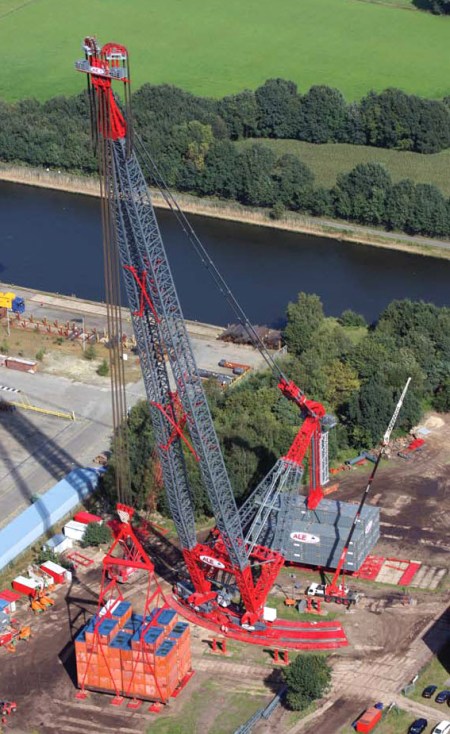In September 2008 Abnormal Load Engineering unveiled the world’s highest capacity land based crane. Designed and built by ALE’s Research & Development Unit in Breda, Netherlands, the crane has a capacity to lift 4,300 tonnes.
Intended for use in the engineering construction, nuclear and offshore fabrication industries, the crane can be dismantled and shipped around the world in standard 20ft and 40ft shipping containers.
In what is a first for a crane of this type, it can be relocated on site fully rigged saving considerable time during the construction schedule of major projects. The ability to lift heavy loads at large distances allows
engineers to complete foundations and pipe racks in advance of major equipment installation.
FPSO construction benefits from the ability to build much larger process packages and install them from the land side without relying on floating cranes or relocating the hull within the limited radius of conventional
cranes.
Specifications of the crane:
Load Moment: 96,000 tonne metres
Lifting Capacity: 4,300te using a strand lift system.
Lifting Capacity: 600te with a quick winch system.
Main Mast: 61 – 130 metres.
Lifting Speed: 10m per hour using a strand lift system and 150m per hour using the winch system.
Slewing Speed: 28m per hour loaded and 50m per hour unloaded.
Source: http://www.ale-heavylift.com/


